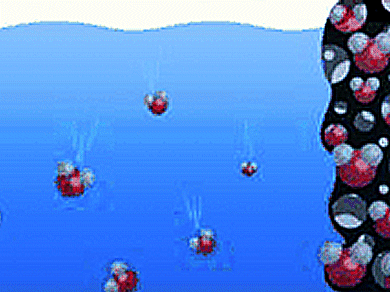Metal–air batteries are highly attractive portable power sources because of their high energy densities. Their only cathode component is a thin membrane, on which the reduction of oxygen occurs. In recent years, the non-aqueous lithium–air cell was very promising. Characterized by theoretically high specific energy value, it suffers from nontrivial challenges, such as low operating current densities, air electrode blocking by reaction products, and safety concerns regarding the use of lithium metal as a fuel.
Yair Ein-Eli, Israel Institute of Technology, Haifa, Israel, and colleagues recently showed that the use of silicon as the anode active material overcomes the availability problem of lithium and avoids safety issues. Now they report that the addition of water to a Si–air/ionic liquid electrolyte battery is responsible for shifting the silica formation reaction zone from the carbonaceous air electrode into the bulk electrolyte. This process improves the cell capacity by 40 %.
This finding may have tremendous practical implications because of the difficulty and cost of removing residual water from ionic liquids.
- Remarkable Impact of Water on the Discharge Performance of a Silicon–Air Battery,
Gil Cohn, Digby D. Macdonald, Yair Ein-Eli,
ChemSusChem 2011.
DOI: 10.1002/cssc.201100169



